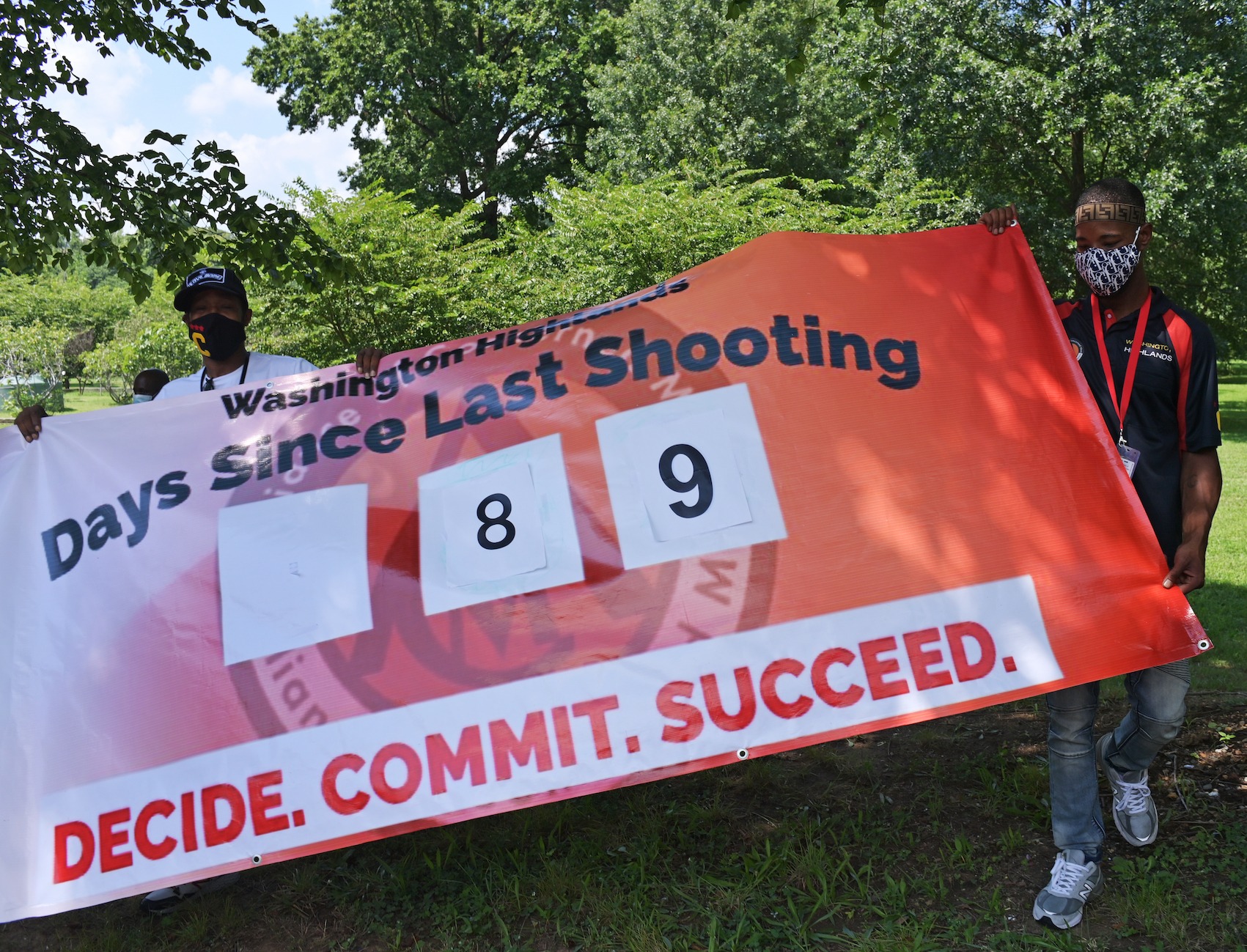Local Officials Need to Invest in Violence Interruption Programs
Violence interruption programs rely on community outreach and engagement to stop violence before it starts. Local officials can make their neighborhoods safer by funding community-led violence interruption programs.

The Point
Violence interruption programs rely on community outreach and engagement to stop violence before it starts. Local officials can make their neighborhoods safer by funding community-led violence interruption programs.
Cities should fund violence interruption programs:
- Cities seeking to build alternatives to policing should fund violence interruption programs. Programs can begin with grants, like the one the Baltimore City Health Department used from the U.S. Department of Justice to implement its Safe Streets program, which deploys violence interrupters to identify and mediate conflicts. Cities can also shift funding from policing to pay for the program, as Minneapolis did when it transferred $1.1 million from the police department to the health department to implement civilian violence interrupters.
- Cities should ensure these programs operate outside of law enforcement agencies, provide comprehensive support to participants, and actively work to mediate conflicts and prevent retaliatory violence. The programs should be implemented and staffed by trusted community groups and individuals.
- Cities have strong support for implementing violence interruption programs. According to polling from The Appeal Lab and Data for Progress, “68% of likely voters support funding community-based programs to train community leaders to de-escalate potentially violent situations” and “71% believe that programs designed to interrupt and prevent gun violence are more cost effective than increasing the number of police in a community.”
Violence interruption programs are more effective than over-policing:
- Violence is an epidemic. One incident of violence can multiply into many. As Cure Violence Founder and CEO Gary Slutkin explains in his TED talk, treating violence as an epidemic means cities must interrupt transmission, prevent further spread, and shift norms around the disease.
- Data shows this model works. For example, the Operation Peacemaker Fellowship in Richmond, California contributed to a 55% reduction in the city’s gun violence. Baltimore’s Safe Streets program was associated with a 56% reduction in homicides and 34% reduction in non-fatal shootings. And one of the most replicated programs—Cure Violence—has consistently been shown to significantly reduce violence.
- The alternative approach of over-policing leads to decreased trust in law enforcement, which increases violent crime. One study found that in the year after Milwaukee police beat Frank Jude, the city saw a significant drop in 911 calls alongside a significant increase in violence.
Dive Deeper
- The Case for Violence Interruption Programs as an Alternative to Policing. Violence interruption programs, used in cities throughout the United States, provide a proven, community-led, and cost-effective solution to reducing gun violence.
- Ten Ways to Reduce Our Reliance on Policing and Make Our Communities Safer for Everyone. Alex S. Vitale explains why police should no longer occupy all of our vital support systems in our communities and how to make our communities safer.

